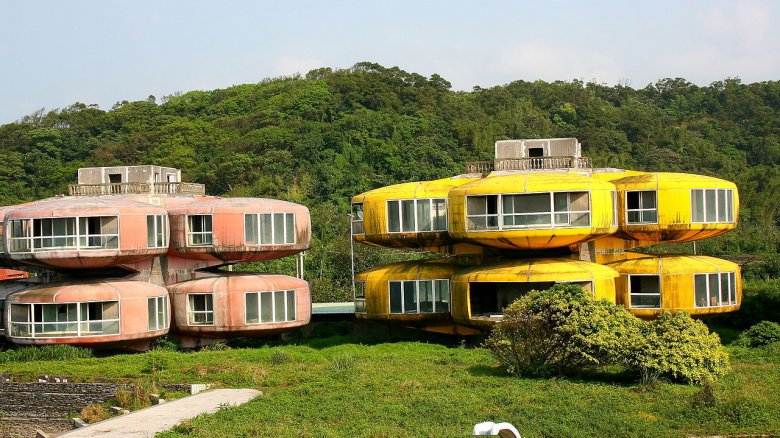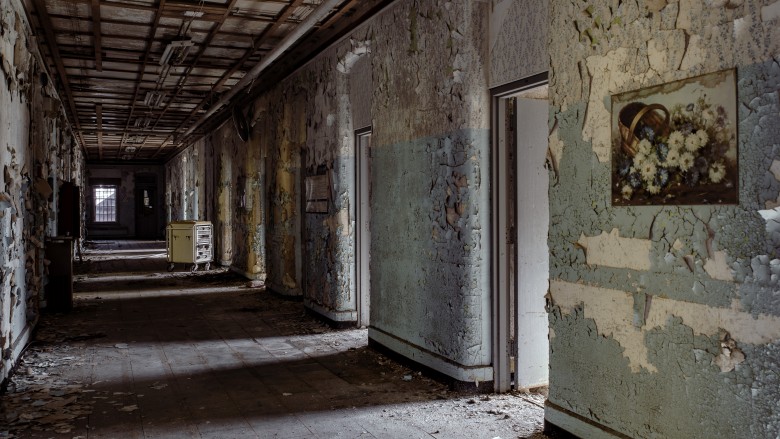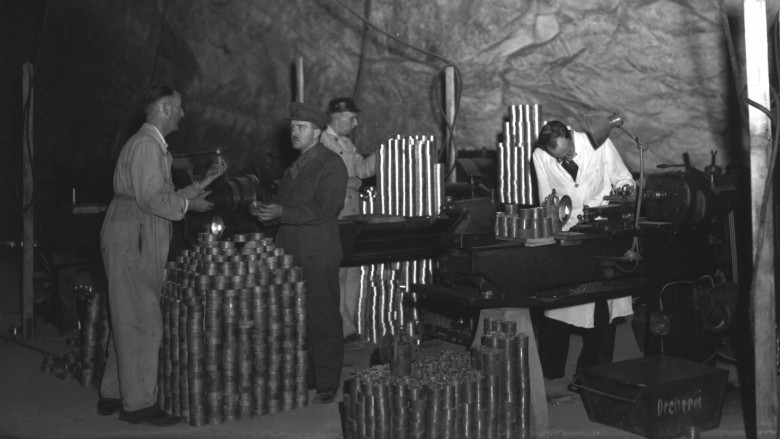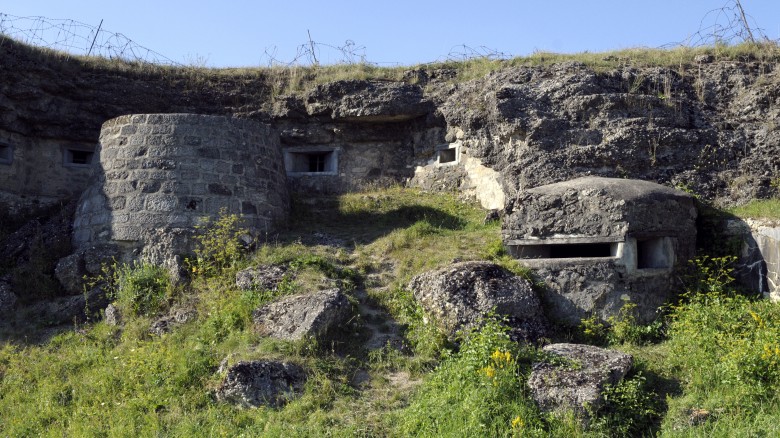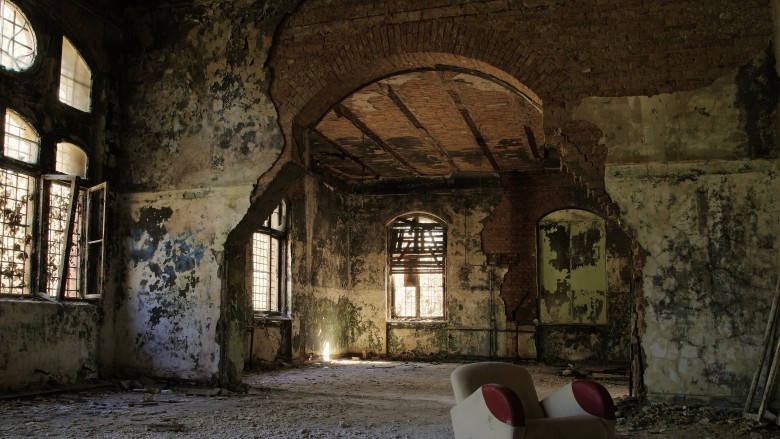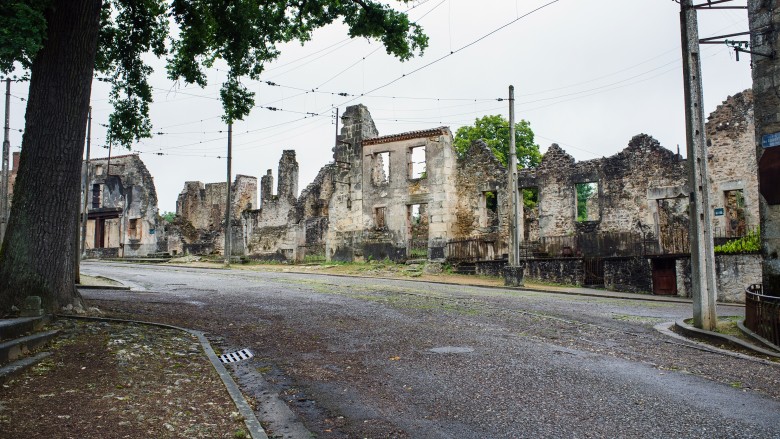Creepy True Stories Behind Abandoned Buildings
No matter where you live, there will probably be an abandoned building nearby. While, in most cases, the reasons for the abandonment are mundane — bankruptcy, lack of upkeep, or simply no interest — once in awhile, the story is far more interesting. And creepy. Here are the creepy, skin-crawly true stories behind real abandoned buildings.
San Zhi houses – Taiwan
Like something out of a sci-fi movie, the San Zhi houses reveal a vision of the future, as seen from the perspective of the 1970s. Construction began in 1978, and the plan was to create a modern tourist destination in the north of Taiwan. The buildings look like a bunch of brightly colored UFOs sitting on landing structures, and there's little doubt they would have made for an exciting place to stay, for those that could afford it.
Before the resort could be finished, though, a series of tragic events, combined with financial trouble and local superstition, eventually led to the complete cancellation of the project in 1980. According to reports, during construction there were a number of deaths ranging from suicide to construction accidents to car crashes. Rumors spread of the existence of an old Dutch graveyard under the site, and when a large sculpture of a dragon—a symbol of luck in Asian culture—was partially destroyed to improve road access, the court of public opinion made up its mind.
The site lay abandoned for three decades, accessed only by squatters, ghost hunters, and the weather. Then, sometime between 2011 and 2014, the structures were finally demolished and the site cleared, leaving behind nothing but bare dirt, and the ghost of what might have been.
Willard Asylum – New York
Willard Asylum for the Insane was built towards the end of the 19th century, on the bank of Seneca Lake in upstate New York. Contrary to what you might expect from a name like that, it actually wasn't a bad place. At the time, there was little understanding of mental illness, and severe cases were sometimes simply locked away. But Willard was created around the idea of "moral treatment" — keeping patients clean and fed, keeping them occupied with sewing, gardening, and other tasks, and even attempting to treat their illnesses. This novel idea was so successful, in fact, that at its height in 1955 there were 4,000 residents, and in the time it was open between 1869 and 1995, it is believed to have been home to over 50,000 people.
Unfortunately, as with any place that attempts to look after severely ill people, there were deaths. But because most of the residents had nowhere else to go, and since diseases like tuberculosis and typhoid were still knocking about, it's estimated that around half of all the patients who arrived never left. But that's not the creepy part. When the asylum was closed down in the '90s, workers made a discovery in the attic. There they found 400 suitcases, carefully wrapped and labeled, that had belonged to patients who had died. Because the average length of stay was around 30 years, many of those who died didn't have any family left to claim anything. So rather than throw everything away, staff packed the patient's possessions into the suitcase they had arrived with and stored them in the attic, where they remained as a time capsule for hundreds of forgotten lives.
Hotel del Salto — Colombia
The Hotel del Salto sits on high cliffs overlooking the Bogota River in Columbia. It was built in that spot in 1923, for the view it offered of the spectacular Tequendama Falls nearby, and it was a popular destination for wealthy travelers for 60 years. Unfortunately, pollution in the Bogota became so bad that tourism dwindled, and the hotel eventually closed in the 1990s and was left abandoned.
The Tequendama Falls have long been a feature of the area — according to legend, it was an important site for Muisca Indians during the Spanish conquest — rather than submit to slavery, they chose to throw themselves off the falls and to their death, in the belief that they would transform into an eagle on the way down and fly away. Tragically, it seems that belief didn't die with them, because after the Hotel del Salto closed, it became a popular spot for local people to try it for themselves. Whoever you are reading this: pelase don't ever, ever do that.
St. Georgen an der Gusen — Austria
For the first half of the 1940s, large parts of western Europe were under the control of Nazi Germany, and so it's no surprise they built military installations all over it. But when the war started turning against them, they became increasingly focused on developing new, more advanced weapons, like the V1 and V2, in an effort to turn the tide back in their favor.
In an effort to avoid the intense bombing by the Allied air forces, these were often built in secret underground facilities — in 2014 according to the Independent, another one was discovered at St. Georgen an der Gusen in Austria. It's close to the well-known Bergkristall factory that was used to build the revolutionary Me 262 jet fighter, but was so well hidden it wasn't found during post-war inspections. It only turned up after researching old wartime intelligence files and performing radiation tests in the area. Why radiation tests? Well, because this 75-acre underground site is believed to be the location of the Nazis' attempt to build an atomic bomb, and it was built with forced labor from the nearby concentration camp, Mauthausen-Gusen.
Tragically, it is believed that up to 320,000 prisoners may have died in the construction and operation of these facilities, and if the Nazis had had their way, that would no doubt have been just the tip of a large, bleeding corpse-filled iceberg.
Fort Douaumont, Verdun — France
Fort Douaumont was one of a number of forts built in the vicinity of Verdun, France, after the Franco-Prussian War to defend against German attack. However, by the time the Germans actually showed up in 1916, French military doctrine had turned away from fixed fortifications, leaving the fort mostly unarmed and with only a token garrison. As a result, it was easily captured — when the French army returned to take it back, they found out firsthand just how effective their own defensive fortifications were.
In anticipation of the use of heavy artillery, the fort is built mostly underground, with a concrete roof almost 20 feet thick. During the battles of 1916 it was hit with over 800 artillery shells every day — while the fort survived the abuse, the noise inside the fort must have been intolerable. Add overcrowding, an insufficient water supply, and a complete lack of lavatories, and you can understand why nausea from the stench was a common experience.
Plus, during the months of German occupation, there were several accidents. On October 23, 1916, thirty German soldiers were killed when a French shell exploded nearby. In another part of the fort on May 8 of that year, an accident involving grenades and flamethrowers (never a good combination) resulted in the deaths of over 800 German soldiers. And although some were buried outside, the carnage was so great that 679 were simply walled into the rooms where they died, and remain there to this day.
The fort now sits in a landscape still devastated, filled with the undiscovered remains of the fallen, covered in shell holes, and so poisoned by the chemicals of warfare that nothing will grow. Even if it would, there's so much unexploded ordnance left in the ground, anyone trying to farm the area risks serious injury or death with every step. Thus Fort Douaumont stands to this day, half-buried, damp and cold, and surrounded inside and out by the remains of those sent to fight for it.
Beelitz military hospital — Germany
Abandoned hospitals are always going to be pretty creepy — it kinda goes with the territory. The abandoned military hospital at Beelitz in Germany isn't just creepy, though — it also comes with a double serving of interesting on the side, with some WHOA for dessert.
Built at the very end of the 19th century, the Beelitz Sanatorium didn't start out as a military hospital, but rather was intended to treat people suffering from tuberculosis. Around that time, the population of Berlin was growing rapidly, and as more and more people started living closer and closer together, tuberculosis started to flex its muscles. As the problem grew, so did Beelitz, until the World War I kicked off in 1914 — suddenly, there were a lot of wounded soldiers that needed care, and Beelitz was taken over by the military.
After the war, the site was expanded even further, to accommodate the hordes of wounded people returning from France, and it was later returned to its original purpose of treating tuberculosis. At the outbreak of World War II, the hospital was again requisitioned by the military, and some buildings were even destroyed by Allied bombs. At the end of the war, the hospital found itself in the Russian sector, where it now served Russian soldiers and high-ranking German civilians until 1994, when the Russians withdrew from Germany, and Beelitz was left to rot.
If you visit the site now, you will be faced with a number of large, fairly ornate, but crumbling buildings. But the creepiest thing about Beelitz has nothing to do with how it looks now, but rather the story of one of its patients. That's because in 1916, none other than Adolf Hitler — then just a corporal in the German army — was sent there to recover from a thigh injury. There are ghosts in these buildings, but probably not the ones you were expecting.
Texas Tower 4
In the 1950s, at the start of the Cold War, the US military built a series of structures that would be placed out at sea and fitted with radar, to provide early warning of approaching Soviet bombers. Because of their similarity to oil-drilling platforms, it wasn't long before the structures became known as "Texas Towers." Five were originally planned, but in the end only three were built: two of which were placed off Nantucket and Boston, and the third (actually called Texas Tower 4 because these are military people, not mathematicians) was placed southeast of New York City, where the sea was deeper and the seabed softer.
Trouble struck even before the tower was in place, with parts of the support structure ripped off as it was being towed into place. Repairs were made but, due to the length of the legs required to reach the seabed, and an inadequate design to cope with the conditions it would experience, Texas Tower 4 soon became known by the much-less-exciting nickname "Old Shaky." Attempts were made to reinforce the tower, and in November 1960 most of the crew was evacuated and the legs were filled with sand and concrete to add strength, but it made no difference. Over the following weeks the situation deteriorated, and the motions of the tower became so violent people were often thrown to the deck. Requests by the commanding officer to evacuate the tower were repeatedly refused, as senior officers feared that nearby Russian trawlers might capture the advanced radar technology.
On January 14, 1961, with winds increasing, one of the leg supports snapped. Permission was finally given to evacuate at 4 p.m., but it was too late. Weather conditions had worsened such that helicopters were grounded, and despite nearby ships' attempts to approach, Texas Tower 4 broke apart and sank, taking everyone on board down with it. Of the 28 crew members on board at the time, only one body was recovered. The rest may lie under 200 feet of water, with the remains of the tower that doomed them.
Marlboro State Psychiatric Hospital — New Jersey
In 1998, Marlboro State Psychiatric Hospital was closed, and its 411 acres of land were abandoned. Now, Marlboro was not an example of how psychiatric institutions should be run: on the contrary, it was run so badly that it inspired the state of New Jersey to change the laws governing psychiatric care.
The state-run hospital was built in the 1930s, and after decades of "normal" operation, things went bad. It went so bad, in fact, a state senator actually went undercover using the name and social security number of a convicted felon to investigate the stories that were coming out. Apart from fraud and corruption, the senator witnessed "inhumane care and treatment of mental patients," and his reports resulted in a Senate task force being created to look into the situation. The list of "irregularities" was long, but along with the treatment of the patients, there was evidence of bribery, environmental problems relating to underground oil storage tanks, and even reports of suspicious deaths. The problems weren't confined to the grounds, either — patients were constantly escaping, resulting in calls to police.
The problem got so bad that, by 1985 — a year after 151 patients escaped — 50 nearby residents applied for gun permits. Abuse, escaped patients, armed residents, and environmental contamination: it sounds like something out of a video game, but it was all too real.
Teufelsberg NSA listening station – Berlin, Germany
As World War II ended, and the Cold War started up, Berlin became a focus of tension between east and west. Across the destroyed remains of the city, opposing forces struggled to learn as much as they could about the other side. In an attempt to listen in on Soviet radio communications, the U.S. National Security Agency built a "listening station" on top of a hill in a forest near the border. It operated right up to the fall of the Berlin Wall, at which point it was abandoned.
But although the NSA building is pretty interesting as an example of defunct Cold War technology, that's not what makes this place creepy. That's because the hill the listening station was built on is not natural, but was in fact constructed from the remains of approximately 400,000 buildings from Berlin destroyed in the war. It's like Kefka's Tower from Final Fantasy VI, only way, way worse. All that rubble wasn't dumped there for no reason, either, but instead to cover up the remains of a Nazi military school that once occupied the site. According to reports, the Allies tried to destroy the college by blowing it up, but it proved too tough, and it ended up being easier to just bury the Nazi institution with an enormous pile of broken homes.
Oradour-sur-Glane — France
There's nothing like a World War to create abandoned buildings, but in the case of Oradour-sur-Glane, it wasn't one building, but an entire village.
Situated in the center of France, near the city of Limoges, Oradour-sur-Glane was a small and unremarkable village. However, when the Allied invasion of Normandy happened on June 6, 1944, it wouldn't take long for things to change. In response to Normandy, an SS panzer division was ordered north from its base in the south. As the division moved, it was constantly harassed by the French resistance in an attempt to slow it down, but as the regiment approached Oradour-sur-Glane, a series of events were about to lead to tragedy.
In an apparent response to the attacks from the resistance, on June 10, a group of soldiers entered the village and rounded up the residents. At first, they claimed to be doing an identity check, and required the villagers to gather in the fairground, but once the villagers were all collected, they separated the women and children from the men and locked them in the church. They then secured the men in several barns ... then the killings started.
The details are brutal, and involved machine guns, grenades, and fire. When it was all over, 642 men, women, and children lay dead. The village was then ransacked and set on fire, and the soldiers then left to continue their journey north. After the war, the village ruins were left as a monument to the atrocity — all that now stands are broken walls, rusting machinery, and tragic stories.

